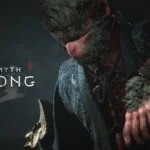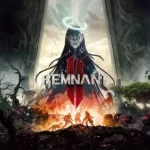In the depths of my sun-deprived abode, where I live as a reclusive collector of gleaming wonders, I have a strange kinship with Gollum. Still, despite this strange bond, I found myself skeptical about Daedalic’s long-awaited Lord of the Rings game. Initial glimpses failed to ignite my imagination, leaving me unsure whether there was even a harmonious play within its shadows. In the midst of this dark haze of doubt, a ray of hope emerges. The Lord of the Rings Gollum, the game, reveals itself to be intriguing concepts, much like the broken pieces of its enigmatic protagonist. Yet, within this circle of ideas, a division emerges, dividing them into two distinct factions, with one holding a much greater allure than its counterpart.

The Fragile Equilibrium: Gollum’s Perilous Journey Through Cinematic Stealth and Platforming
In the seductive realm of gaming, Gollum embarks on a thrilling journey that crosses the boundaries of two action-packed genres, yet fails to stand up under the scrutiny of critical analysis. At its core, this interactive masterpiece reveals itself as a cinematic experience imbued with the essence of a rudimentary stealth platformer. Imagine a delicate balance between Uncharted’s wall-climbing adventures and Splinter Cell’s stealthy hunt. However, Gollum, burdened by his physical limitations, finds himself trapped in a strange situation both within his character and in the real world.
On the platforming skills front, each area offers a singular path for Gollum to traverse. This treacherous journey demands a skillful mix of seizing highlighted ledges, deftly traversing brightly colored ropes or vines, clinging to walls, and occasionally indulging in thrilling swings across a sturdy bar. it occurs. The environments that unfold before Gollum’s eyes are breathtaking, their verticality inviting audacious leaps that defy death itself. But alas, Gollum’s delicate frame betrays him, as any significant fall results in instant death, his body turning into a brief, awe-inspiring spectacle before abruptly retreating to the final outpost.

Amidst the relentless cycle of death, the way forward often reveals itself with remarkable clarity, while the generosity of benevolent checkpoints brings relief from gloom. And when Gollum’s instincts falter, a simple press of a button unveils the miraculous Gollum Vision™ (Smeagoggles, Perchance), illuminating usable objects, concealing opponents, and indicating the way. However, this proves to be of invaluable assistance as Gollum himself, only providing reliable assistance on occasion. Still, there lies a thematic genius within this puzzling design choice, an admirable justification for a feature that’s often criticized.
Immersed in the realm of stealth, tightly intertwined with the art of jumping, Gollum finds himself navigating a more linear area than the platforming sections. A mere brush with a guard’s grip leads to a quick and irreversible play, leaving no room for even the slightest miss. Fortunately, the secret sections provide ease of navigation, with shady recesses and lush blades of grass standing as beacons, while the guards’ predictable patrol routes are laid bare. However, engaging in combat remains an elusive dream. Only when faced with helmetless orcs does the opportunity arise for Gollum to stealthily strangle his opponents, a rare occurrence so rare that the achievement titled “Murderer” awaits those daring enough to who can only dispatch ten enemies.
The Fragile Tapestry: Gollum’s Dualistic Journey of Clumsiness and Captivating Fiction
In this mesmerizing tapestry of action, both parts are revealed as functional, but somewhat incomplete. Gollum, in all his dirty and decrepit glory, fails to evoke the tenacious power of daring adventurers like Nathan Drake or the calculating cunning of the famous Sam Fisher. His frail physique and disheveled appearance reduce the credibility of his actions. Whether he miraculously clings to a ledge or plummets to an instant death, sometimes it seems as if chance controls his fate. Sadly, the control inputs fumble sporadically, injecting an unwanted element of unpredictability into the experience.
ALSO READ: World of Warcraft Dragonflight Review -The Best and The Worst
While the checkpoints offered throughout the stealth and platforming escapades are plentiful, their presence only serves as a temporary respite from the relentless trial and error. The path ahead becomes an ambivalent existence – one either dutifully follows the intended path prepared or succumbs to a swift death. While the mechanics function well enough within these limits, if this were the limit Gollum offered, persistence would be unlikely, and the temptation to give up on the quest would be ever greater.
Fortunately, the narrative aspect of Gollum emerged as the saving grace of my experience. In the moments when it shed its covert platformer persona, it revealed itself as a captivating piece of interactive Tolkien fanfiction reminiscent of the 2021 release Guardians of the Galaxy, with its engaging walk-and-talk formula Engaging action moments. Like his counterpart, Gollum appears against breathtaking backdrops, inviting players to immerse themselves in a visually stunning world. Although the character animations, especially during dialogues, sometimes suffer from stiffness, the power of the script overcame these minor flaws, successfully grabbing and holding my attention.

Within its narrative fabric, Gollum delves deep into the intricacies of his titular character, uncovering the intricate web that keeps him eternally estranged from society despite his sincere efforts and potential for meaningful connection. The exploration of Gollum’s psyche, motivations, and the underlying forces shaping his existence fascinated me, providing profound insight into his enduring status as an outsider. Like a masterful dissection, the script peeled back the layers, illuminating Gollum’s inner struggles and the reasons behind his perpetual isolation, leaving an indelible mark on my gaming journey.
Amidst the tapestry of Gollum’s interactive journey, there are frequent prompts reminiscent of Telltale Games’ signature style, allowing players to shape the dialogue by responding to either Gollum or Sméagol. These choices, though they may not always lead to significant results, inject a dynamic element into the narrative, reminiscent of engaging in tense exchanges where I had to pick a side and argue fiercely for their, opposing half. Persuasive reasoning had to be used to subdue the. These moments of internal struggle and the subsequent choices added a layer of tension and agency to the gameplay, increasing my immersion in Gollum’s captivating world.
Theoretically, the game adopts a typical duality. After Bilbo Baggins absconds with Gollum’s precious ring, the opening half of the game delves into the story of Gollum’s harrowing existence in the wretched slave pits beneath the ominous realm of Mordor. It reveals Gollum’s plight as he struggles with both his literal neurodivergence and his laborious role as a miner, painting a vivid portrait of his enduring spirit in the face of unimaginable hardship. Through an intricate web of ingenuity and improvisation, Gollum weaves a long and treacherous plan to secure his freedom, one riddled with loopholes and with an ever-increasing likelihood of failure. This enticing narrative thread captivated me, evoking a deep sense of sympathy and admiration for Gollum’s resilience in the face of insurmountable odds.
The Lord of the Rings Gollum: A Dark and Unsettling Journey Through Mordor’s Intricate Realms
In the realm of Mordor, a surprising and stark contrast emerges, a far cry from the cartoonish and heavy metal aesthetics of Middle-earth: Shadow of War, where cynical orcs and a seductive shelob hold sway. In this iteration, Mordor reveals itself as a grim and terrifying landscape, its essence woven with eerie detail. Elaborately carved black steel, stretched and bloody skins, and sleek, freshly flowing blood and black waters of ink pervade the atmosphere. While the explicit violence may be portrayed sparingly, the disturbing consequences linger, inviting the imagination to conjure up horrors beyond what is clearly shown.
ALSO READ: Dead Island 2 Review – Surviving Through Hell
Exploiting this dark atmosphere, the game delves into the mechanics and politics of Mordor, shedding light on its complex workings. Alongside his mining endeavors, Gollum toils in the orc breeding pits, offering a glimpse of the ruthless machinery responsible for developing Sauron’s armies, akin to the cultivation of warlike sea-monkeys. Gollum finds himself feeding these piranha-like larval orcs a mixture of magically fortified gore to nurture their growth, until they turn into the pallid humanoids we know and love … or rather, love to stab. In addition, the game draws attention to the rival factions of humans within Sauron’s employ, casting a spotlight on a character known as The Candle Man – a cunning wizard who manipulates Gollum into becoming an informer and a subordinate lackey. Manipulates as both, stealing the limelight with his schemes. and mechanism.
The visual depiction of orcs in Gollum stands out as a distinctive departure from other Lord of the Rings games. These Orcs have a less impressive stature, with a vaguely insectoid appearance, clad in round metal armor that merges with a patchwork of leather and chainmail. This visual departure from the norm is further emphasized by the game’s deviation from Peter Jackson’s iconic film adaptations. While Gollum’s design and character performance remain faithful to his cinematic counterparts, the rest of the game takes liberties, forging its own path.
This departure becomes especially apparent in the latter half of the 10–12 hour campaign set within the land of the elves. Here, a brighter and less grim atmosphere prevails, while there is still a sense of palpable tension, as if Gollum or the elves could break in at any moment. The elves themselves receive a distinctive portrayal, deviating from traditional depictions of willows and ephemeral beings. Instead, they are presented as scruffy, slimy, and with an air of condescension. This flawed portrayal adds an intriguing layer of complexity, especially when it comes to the sullen and sassy Elaine teen who is tasked with overseeing Gollum’s actions.
The fusion of these two narrative parts may not have happened as smoothly in the middle as I had hoped for, yet both the volumes managed to grab my attention. Despite the predetermined outcome of the story — Gollum leaving to torment Frodo with endless grief — I found myself invested in the personal stakes in the game. Gollum, torn between his conflicting desires to help or betray, struggles to form real relationships or trust others. His peculiar behavior becomes a source of investigation, deepening the rift between him and the characters he encounters.
ALSO READ: Forspoken – The Ultimate Strategy Guide to Unleashing the Magic
While Journey of Gollum may stumble in its execution as both a platformer and stealth game, I’m excited to find its storytelling strengths stand apart from the vision of Middle-earth crafted by Jackson and Bakshi. Is. Like its dazzling protagonist, one half is the epitome of pragmatism with a stinging and sometimes bratty side, while the other is brimming with a starry-eyed eagerness to please. Thankfully, the synergy achieved by this contrasting combination is greater than the sum of its individual parts, leaving a lasting impression that far outweighs any mechanical shortcomings.
Verdict
The Lord of the Rings Gollum dances between brilliance and fragility with split gameplay and a captivating narrative. Gollum’s platforming and stealth actions, though functional, lack finesse. The story shines though, delving into Gollum’s fractured psyche and offering a unique look at Middle-earth. Like its tormented protagonist, parts of the game may be flawed, but together they make for a mesmerizing and unforgettable experience.
FAQs
What is “The Lord of the Rings: Gollum“?
It is a video game by Daedalic Entertainment based on J.R.R. Tolkien’s Series.
What genres Does the Game Fall into?
Stealth and Platforming.
Which Platforms will the Game be Available on?
PC, PlayStation, Xbox and Nintendo Switch.
Is it a Faithful Adaptation of the Movies?
It offers a Unique Portrayal of Middle-Earth.
Is Combat a Significant Aspect of the Gameplay?
No, the Focus is on Stealth and Exploration.
Will it Explore Gollum’s backstory?
Yes, it Delves Into her Past and Internal Struggles
How Long is the Gameplay Experience?
About 10 to 12 hours.
Will it Feature Familiar Locations and Characters?
Yes, including Mordor and Various Characters.






